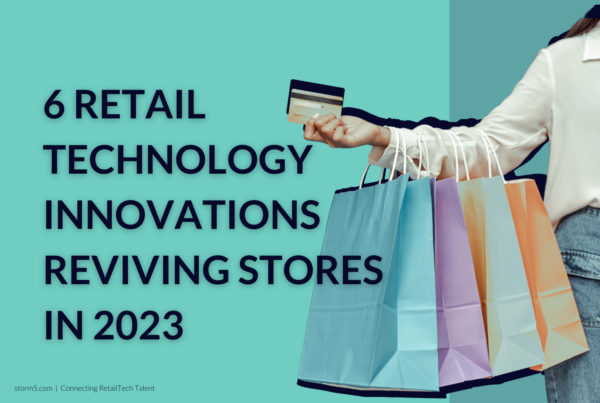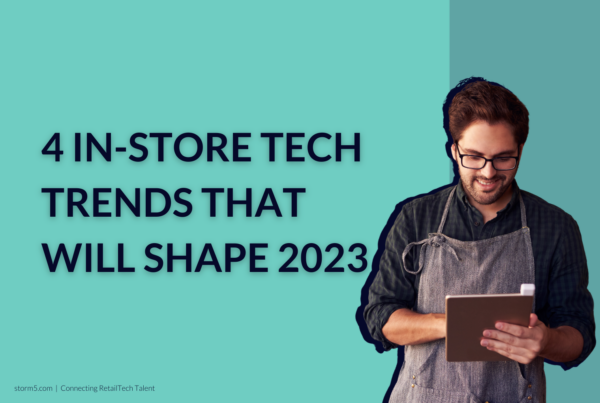How Retail Technology Changed Shopping Behaviour in 2022
The year 2022 is shaping up to be a huge one for retail technology. The last two years have seen a surge in e-commerce growth...
The year 2022 is shaping up to be a huge one for retail technology. The last two years have seen a surge in e-commerce growth and investment as retailers improved their online presence and digital strategies to meet customer demand following the pandemic. However, despite ever-changing technologies and the rise of online shopping, the appeal of brick-and-mortar retail has not waned.
More retailers will master immersive in-store experiences alongside user experience online in 2022, allowing them to succeed across both channels. As a result, trends like omnichannel retail will be one of the defining themes for retail technology in 2022.
Omnichannel Retail
Nowadays, most shopping journeys begin online, but that does not automatically mean they end there. Sometimes the most convenient destination is a physical store. More retailers are recognising the complexities of the customer journey, which frequently transitions between online and in-person interactions. A single purchase may begin in a physical location but be completed online. This has ushered in a new era in retail, known as omnichannel retail.
Omnichannel retail refers to transactions across numerous channels, such as marketplaces, social channels, and physical stores. The aim of an omnichannel strategy is to provide a consistent brand experience wherever you sell to meet your customers where they are and build relationships that transcend channels. It should also include a focus on optimising your business through channel diversification and comprehensive data and system integration.
While having these options is important, you must also ensure that the experience is seamless. Customers want to be able to simply switch across platforms and keep their purchasing experience the same. This involves connecting all your channels, from brick-and-mortar to online, so that customers don’t have to keep looking for the product they’re interested in. Your storefront is no longer just one location. It’s all over the place where your customers are.
In short, the speed with which consumer behaviour is changing in 2022 has made an omnichannel strategy more crucial than ever. According to a 2020 survey performed by BigCommerce and Retail Dive, 46% of retail executives stated they planned to boost their investment in omnichannel commerce in the future, compared to their plans before COVID-19.
Adopting an omnichannel approach will help you to meet the customer where they are with accurate and meaningful experiences, allowing you to keep up with the evolving retail technology landscape.
Conscious consumers
The rise of conscious consumers continues to grow in 2022 and with the help of technology, consumers are demanding more of retailers. From environmental concerns to a desire to see better representation in the products sold, consumers expect RetailTechs to perform better.
Customers need to believe retailer’s conscious efforts are genuine. Research from the Chartered Institute of Marketing shows that 63% of customers say they would like brands to be more vocal about their sustainability plans but remain sceptical about their authenticity.
Conscious consumers have pushed retailers to develop and implement sustainable initiatives. From IKEA partnering with energy experts Big Clean Switch in its initiative aimed at making sustainable living more accessible and affordable, to Farfetch acquiring resale platform Luxclusif, it’s clear that established companies are leveraging this trend to satisfy customers demands.
Diversity and inclusion are other areas of concern for conscious consumers. There has been a greater demand for retailers to diversify their product lines and make their stores and websites more accessible. In the beauty industry, a lot of retailers are expanding their shade ranges, and are partnering with retail technology startups to provide virtual try-on. Perfect Corp recently partnered with M.A.C. Cosmetics and SoPost to offer a personalised omnichannel shopping experience through AR virtual try-on with personalised AI shade matching, as well as physical product sampling sent to customers’ doorsteps.
Retailers need to pay close attention to the demands and concerns of their customers. Small improvements in your business, such as investing in sustainability, diversity, and inclusion, can have a big impact. Customers nowadays expect retail technology startups to be responsive. They will seek out and remain loyal to companies that can persuade them that their purchases are doing more good than harm.
Social commerce
Social commerce has become a popular buzzword and has accelerated due to the pandemic. In simple terms, social commerce is the intersection of e-commerce and social media. Brands utilise social media platforms for sales, resulting in a seamless in-app purchase journey. Whether it is Facebook, Instagram, or TikTok, social platforms have become beneficial sales channels for businesses.
Social media is the leading source of shopping inspiration for 97% of Gen-Z customers. Now is the best time for retail technology startups to implement a social commerce strategy that connects them with consumers in a more personalised and seamless way than ever before.
Social commerce is the fastest growing e-commerce extension, and it works best when it connects with a brand’s existing sales channels, from its online storefront to its in-store presence. The simpler the purchasing options and checkout process, the more likely the consumer will complete the purchase entirely through social media or at the very least follow the path to purchase through the brand’s other channels.
Shopify, a major player in the social commerce space, recently expanded its partnership with Tiktok to enable merchants to sell live. As part of the shift into online retail, YouTube also entered the social commerce scene with its ‘Holiday Stream and Shop,’ which allowed users to sell a combination of their own products and select brands directly through the platform.
According to Research and Markets, the global social commerce market is set to reach $2.9 trillion by 2026. RetailTechs should invest in social commerce in 2022 because social media platforms, in many ways, level the playing field between small and large businesses.
As leading RetailTech recruiters, our specialist team of experts are skilled and equipped to find the perfect candidate for an emerging RetailTechs’ success in this ever-evolving retail landscape. Get in touch today if you’d like to learn more!








